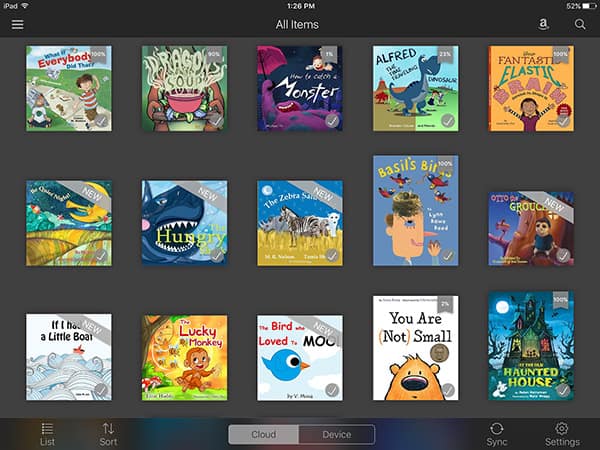
Above: Amazon’s Kindle offers a range of low priced books for younger children.
BitDepth#1020 for December 22, 2015
There is an understandable tension between the need to have children engage with the world and to manage their relationship with it through screens of varying sizes.
When I was a child, screens were a keyhole and for the first ten years of my life, they were also an abstraction, a little world without colour.
Today’s screens are both much smaller and much larger than those huge tube television sets and they are far more pervasive than ever before.
In my home and home office alone, there are ten screens available for a child to interact with and the curious mind in question is disturbingly familiar with at least half of them.
The first instinct is always to diminish interaction with them in favour of more tactile experiences, but is that a realistic goal?
In the last 25 years, ever since I had my first interaction with mainstream personal computers here at the T&T Guardian, my work and content have migrated from a range of services and media, unifying and replicating into a growing number of screens under my personal control.
Once my consumption of content was programmed by distant content professionals, now I am the programme director, distribution buyer and editor of my own content streams.
In this decade alone, the idea of a daily radio or television entertainment lineup has disappeared from my thinking entirely. I no longer know what’s on or when it’s playing and I no longer have any reason to care.
This is the world into which we are raising our children and yearning for the days of crisp books read under sheet covers by flashlight and family gatherings around the television are a dangerous fantasy that isn’t supportable by any current reality.
Short of an electronics-frying global EMP and a reversion to one of those Amish inspired dystopian futures; our children will juggle more streams of content in a day than most of us encountered in a month as preteens.
So yes, there must be a balance between screen time and real world time, but we must also be ready to lead an understanding of screen management and content exploration.

The YouTube Kids app filters inappropriate content for younger patrons of the video aggregation website.
I’d spent much of the last year hovering over a young shoulder, halting surprise excursions into dubious content before discovering YouTube Kids, for instance. Unlike the standard YouTube app for tablets and phones created to source popular posts to the video website; this version limits what’s available to young eyes.
It won’t work for tweens who will quickly recognise the “kiddieness” of the software, but up to around age seven, it should provide a good gatekeeper for some of the more suspect material on YouTube.
Some software looks good but turns out to be a dead-end. So-called “appisodes” try to repurpose existing video content into interactive game timelines with puzzles embedded in them.
They are as annoying as television content that tries to mimic interactivity by prompting viewer interaction, rather like a soca singer trying to drum up crowd response to a dud tune.
They are neither truly interactive nor are they particularly entertaining. Most offer little replayability.
Amazon’s Kindle offers a pleasant surprise though.
The Kindle app allows access to your digital library across a range of devices and the company has been quietly building a large library of children’s books.
Most of the books are cheap, some of them absurdly so. It’s not uncommon to find digitized books selling for between US$0.99 and $2.99 that are worth far more.
But shop carefully and read customer reviews, because some are not only rubbish, they are formatted badly and display poorly.
There are basically two kinds of Amazon children’s book; those with images formatted with text and those which are scans of full book pages.
Both display well on tablets, but scanned books are often just too big and unwieldy for the smaller screens on phones.
These are books that are designed to be read, unlike digital books, which usually are packaged with their own read-along narration.
The days of trusting a screen to act as a palliative for a small child are over and turning them off isn’t teaching anything useful either.
The challenge for parents in 2015 is stock these new devices with carefully selected software and then teach children how to navigate them effectively and without distraction.


